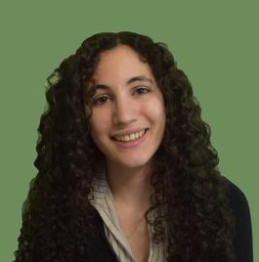
Karin Saltoun, McGill University
Scientific publication
Saltoun K, Adolphs R, Paul LK, Sharma V, Diedrichsen J, Yeo BTT, Bzdok D. Dissociable brain structural asymmetry patterns reveal unique phenome-wide profiles. Nat Hum Behav. 2023 Feb;7(2):251-268. doi: 10.1038/s41562-022-01461-0.
Revealing how division of labour occurs in the brain
Humans have evolved large, costly brains which enable the many cognitive tasks behind everything we think, feel, and do. The division of the brain into two hemispheres is probably one of the brain’s key organizational principles with left and right hemispheres anchoring specific cognitive processes, such as specialization for spatial and facial processing in the right hemisphere and the dominance of the left hemisphere in language comprehension and production. Yet there remains a vague understanding of how the physical structure of the brain relates to the functional division of labor between hemispheres. A study led by PhD student Karin Saltoun at McGill University looked at grey- and white-matter structural imaging of over 37,000 UK Biobank participants and revealed that brain asymmetry is a more complex phenomena than previously believed. Rather than one or two areas of the brain with pronounced asymmetry, they discovered that all levels of the brain meaningfully deviated from symmetry in systematic ways.
Using a statistical analysis approach that reveals how much two variables vary or “move” together, the researchers revealed that commonly studied brain regions had one or multiple spatially-disperse brain features with interrelated asymmetry. In other words, brain features do not spontaneously deviate from symmetry but rather shift in conjunction with other brain features. Their analysis further revealed that these asymmetric partners spanned all regions of the brain.
The UK Biobank is a large-scale epidemiological initiative that offers behaviour, lifestyle and mental health indicators in addition to the uniform structural brain-scanning for over 37,000 individuals used in the first leg of the study. The researchers were therefore able to compare the newly discovered asymmetry patterns with a broad portfolio of ~1,000 real-world lifestyle indicators.
This analysis revealed a breadth of asymmetry-linked behaviours and traits that have been discussed only rarely in the context of asymmetry. For example, they revealed associations with socioeconomic status, immune system markers and depression to specific asymmetry patterns. They further found unique combinations of phenotypic links, such as cognition but not mental health in one pattern, while handedness and cognition characterized another.
The researchers uncovered a sequence of unique brain asymmetry patterns that spatially overlap in the human brain, and each relate to a unique constellation of measurable behavioural and lifestyle indicators. The researchers have made these brain asymmetry patterns freely available through a public database to enable others in the community to peruse and use the full set of results.
About Karin Saltoun
Karin Saltoun performed this research as a Master’s student in the laboratory of Dr. Danilo Bzdok at the McConnell Brain Imaging Centre, Montreal Neurological Institute (MNI). As the lead author, Karin Saltoun contributed to all aspects of the paper, including data analysis, code development, figure preparation, and manuscript writing.
Sources of funding
This study was supported by the Brain Canada Foundation, through the Canada Brain Research Fund, with the financial support of Health Canada, National Institutes of Health (grant nos. NIH R01 AG068563A and NIH R01 R01DA053301-01A1 to D.B.), the Canadian Institute of Health Research (grant nos. CIHR 438531 and CIHR 470425 to D.B.), the Healthy Brains Healthy Lives initiative (Canada First Research Excellence fund to D.B.), Google (Research Award, Teaching Award to D.B.) and by the CIFAR Artificial Intelligence Chairs programme (Canada Institute for Advanced Research to D.B.). Karin Saltoun was supported by a Canada Graduate Scholarship at the Master’s level awarded by the Canadian Institutes of Health Research.
